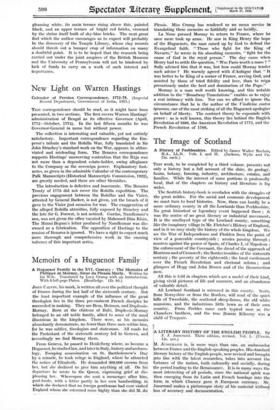From Babylon to Peeblesshire
Babilu and Ur
Babylonian Life and History. _.By sir. E. A. Wallis Budge.0 (Religious Tract Society. 16s. Bd. net.) Babylonian Life and History. _.By sir. E. A. Wallis Budge.0 (Religious Tract Society. 16s. Bd. net.) Tun romance of -Babylonian discovery and research is one which should have a fascination for everyone, and Sir E. A. Wallis Budge brings to it a long experience. His facts are useful, but one has the feeling that they are being stated without any sympathetic insight into the culture of a. great period. Kings, gods and geddesses, and. all the heaVenly and infernal hosts of Babylonia seem to be as much composed of baked clay as are the fraginentarY records of their history. The contemplation of .the practices and legislation of Mesopotamia in days gone by impresses one with the .faCt that after all the world does appear to have advanced some= what. It was a hard regulation, tar eicample, that the doctor whO perforthed an unsuocesSful operation should be liable to luctig his ,hands amputated and such a rule must have discouraged surgery in the (Ilya' of Ithammurabi ; on the other hand, as the specialiSts of those'clayS (*hose fee, by the way, was 'regu:. lated at ten shekels of silver) operated with a copper lancet and even dealt' with eye trouble with that instrument, one must recognize' that something had to bc done for publiC protection. Jerry-building alsO must hive been unpopular in 'Babylonia when 'the law of limb for limb, and life for life„ was applied to builders and contractors. The . book ends with a brief account, of recent excavations, bringing us face to face with a civilization whose records go. back to four millenniums before the Christian Era and whose histOry loses itself in the mists of. the past. The ancient city of Ur begins to live again .as the excavator's spade uncovers its vanished glories ; and before the mind's.. eye there rise, its clustering palaces, and fortifications, and the massiye Sikkurat which dominated it. with its colonnaded perimeter
, . . gleaming white, its main terrace rising above this, painted black, and an upper terrace of bright red bricks, crowned by the shrine itself built of sky-blue bricks. The next great find which the author encourages us to expect will probably be the discovery of the Temple Library, whose clay records should thresh out a bumper crop of information on many a doubtful point. It is to be hoped that the research being carried out under the joint auspices of the British Museum and the University of Pennsylvania will not be hindered by lack of funds to carry on a work of such interest and importance.























































 Previous page
Previous page